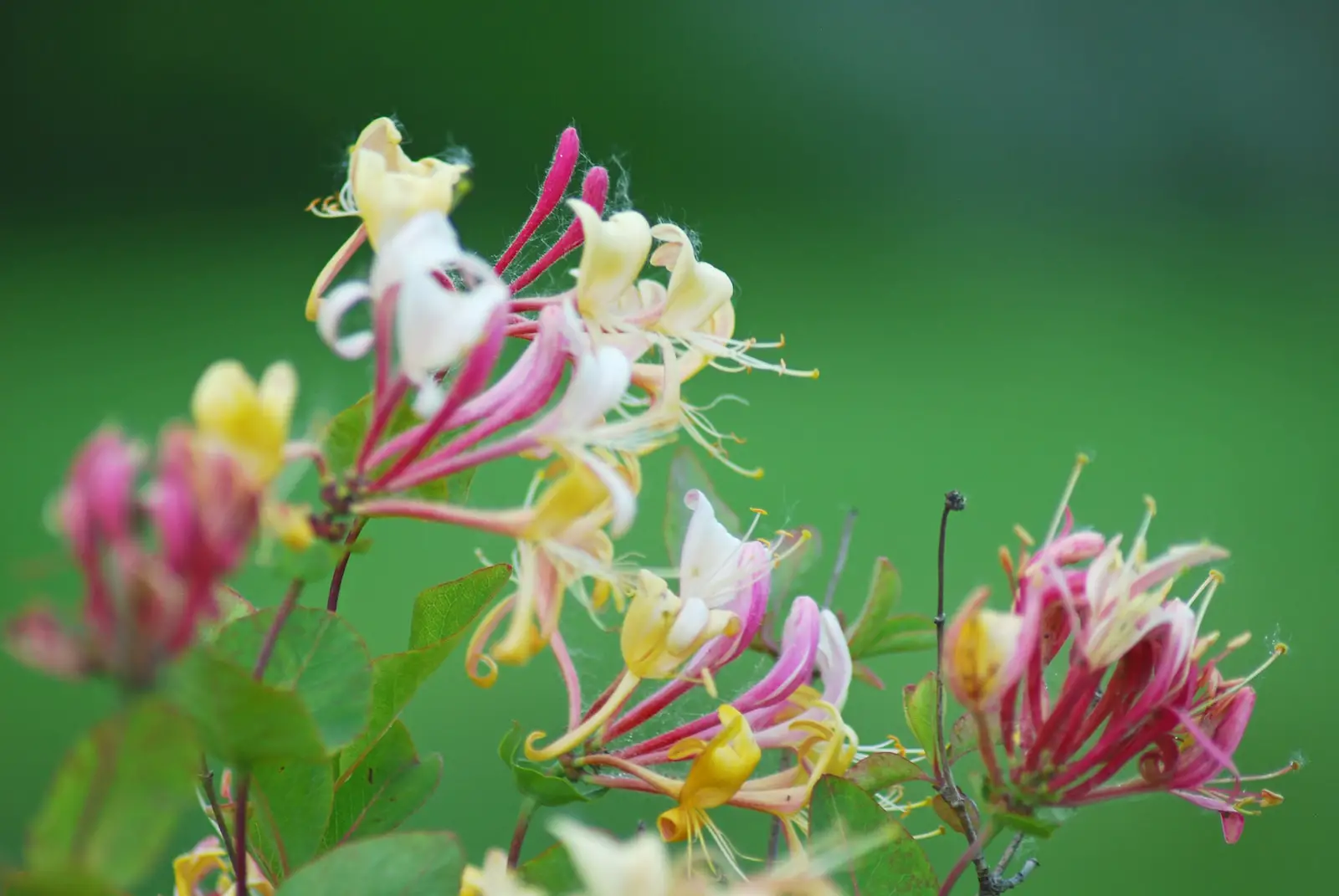Honeysuckle is a plant that conjures images of summertime, with its sweet fragrance and tubular flowers in vibrant shades of yellow, orange, and sometimes red. Belonging to the Lonicera genus, honeysuckle includes approximately 180 species of flowering vines and shrubs.
Known for its rapid growth and ability to attract butterflies and hummingbirds, honeysuckle serves as both an ornamental plant and a functional part of the garden ecosystem. In some cultures, honeysuckle flowers have been used for medicinal purposes, owing to their anti-inflammatory and antiseptic properties.
However, not all honeysuckle species are created equal. While some are valued for their beauty and scent, others, like Japanese honeysuckle, can be invasive in certain regions, outcompeting native plants and disrupting local ecosystems. Careful consideration of the species and local conditions is vital when introducing honeysuckle into a garden or landscape.
| Attribute | Details |
|---|---|
| Common Names | Honeysuckle, Woodbine |
| Botanical Name | Lonicera |
| Family | Caprifoliaceae |
| Plant Type | Vine or shrub |
| Mature Size | Varies by species (6-20 feet) |
| Sun Exposure | Full sun to partial shade |
| Soil Type | Well-drained, loamy soil |
| Hardiness Zones | 4-9, depending on species |
| Native Area | Northern hemisphere, especially Europe & Asia |
Honeysuckle Care
Caring for honeysuckle requires understanding the specific needs of the chosen species. Generally, honeysuckle thrives in well-drained, loamy soil, and benefits from regular watering during its first year to establish a robust root system. After this period, honeysuckle tends to be more drought-tolerant.
Pruning can be necessary for controlling growth, especially in the case of vining varieties, which can become unruly if left unattended. Regular monitoring for pests and diseases will also ensure a healthy and vibrant plant.
Light Requirement for Honeysuckle
Honeysuckle prefers full sun but can tolerate partial shade. Ensuring proper sunlight will encourage flowering and help keep the plant healthy.
Soil Requirements for Honeysuckle
Well-drained, loamy soil is ideal for honeysuckle. The plant can adapt to various soil types but performs best when organic matter is added to enrich the soil.
Water Requirements for Honeysuckle
Regular watering during the first year of growth is essential for establishing a healthy honeysuckle plant. Once established, honeysuckle is relatively drought-resistant.
Temperature and Humidity
Honeysuckle is adaptable to various temperature ranges, thriving in the hardiness zones appropriate for the specific species. It is not particularly sensitive to humidity levels.
Fertilizer
A balanced, slow-release fertilizer applied in the early spring can promote vigorous growth and blooming. Over-fertilizing should be avoided, as it may lead to lush foliage at the expense of flowers.
Pruning Honeysuckle
Pruning is essential for controlling growth and maintaining the desired shape, especially for vining varieties. The best time to prune is late winter or early spring.
Propagating Honeysuckle
Honeysuckle can be propagated through cuttings or division. Cuttings should be taken in late spring or early summer, treated with rooting hormone, and planted in well-drained soil.
How To Grow Honeysuckle From Seed
Growing honeysuckle from seed requires patience, as germination can be slow. Seeds should be sown in well-drained soil and kept moist. Stratification, or chilling the seeds, might be necessary for some species.
Common Pests & Plant Diseases
Aphids
These insects can be treated with insecticidal soap or neem oil.
Powdery Mildew
A fungicidal spray can control this common fungal disease.
Common Problems With Honeysuckle
Lack of Flowering
This problem can often be traced to insufficient sunlight or over-fertilization. Adjusting these factors may restore blooming.
Invasive Growth
Some species, like Japanese honeysuckle, can become invasive. Planting non-invasive species and regular pruning can control growth.
Pro Tips
- Choose the right species for your region to prevent potential invasiveness.
- Support vining honeysuckle with a trellis or fence for best growth.
- Deadhead spent flowers to encourage further blooming.
- Be mindful of neighboring plants, as honeysuckle can compete for nutrients and space.




